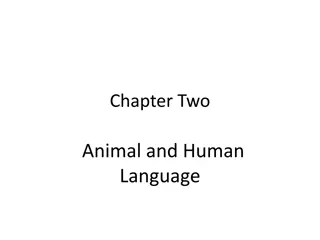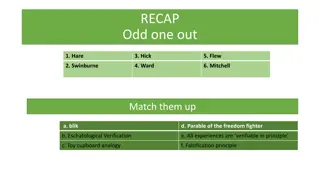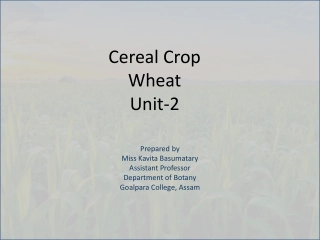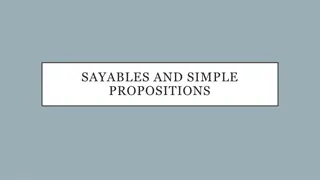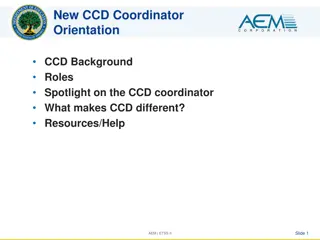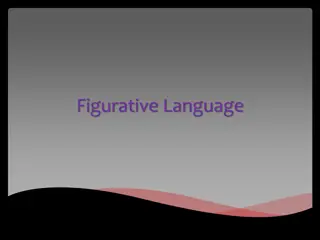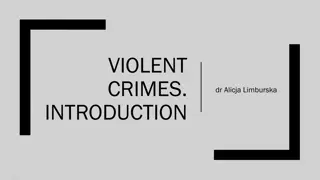Understanding the Distinctive Features of Human Language
Human language is characterized by distinctive features such as the use of sound signals, arbitrariness, the need for learning, duality, and displacement. These intrinsic features set human language apart from other communication systems, allowing for complex and diverse forms of expression.
Download Presentation

Please find below an Image/Link to download the presentation.
The content on the website is provided AS IS for your information and personal use only. It may not be sold, licensed, or shared on other websites without obtaining consent from the author. Download presentation by click this link. If you encounter any issues during the download, it is possible that the publisher has removed the file from their server.
E N D
Presentation Transcript
OVERVIEW 1. Distinctive Features of Human Language 2. Defining Language
DISTINCTIVE FEATURES OF LANGUAGE There are several intrinsic features that distinguish human language from other communication systems. These intrinsic features include: 1. The use of sound signals 2. Arbitrariness 3. Displacement 4. Duality 5. The need for learning 6. Creativity 7. Patterning of units Structure dependence 8.
THE USE OF SOUND SIGNALS Human language is based on the use of sound signals. The use of sound signals have several advantages, such as: 1. Sound signals can be used in the dark and at some distance. 2. They allow a wide variety of messages to be sent. 3. The use of sound signals leaves the body free for other activities.
ARBITRARINESS Animals use motivated, rather than arbitrary, signal to convey the intended message. For instance, to warn off an opponent, a cat stimulates an attacking attitude by arching its back and appearing ready to pounce Arbitrariness means that there is not logical link between the signal (i.e. the sounds) and the message (i.e. meaning). In human language, the link between the signal and the message is arbitrary, but conventional.
THE NEED FOR LEARNING Animal are genetically endowed with the ability to use a limited number of signals. Humans, on the other hand, need to learn language. Human language is by no means totally conditioned by the environment. There is some type of innate predisposition towards language in a new-born child. However, this predisposition can be activated only by long exposure to language, which requires careful learning.
DUALITY Duality means that language is double-layered. It is composed of a set of basic sounds (i.e. phonemes) which can be combined into larger units (i.e. words). This double-layering (i.e. duality) makes language flexible and powerful.
DISPLACEMENT Most animals can communicate about things in the immediate environment only. Unlike most other animals, humans can discuss objects and events that are removed in time and place. Displacement means that human language can communicate about things/persons that are absent and distant as easy as about things/persons that are present and close.
CREATIVITY Most animals have a very limited number of messages they can send or receive. Human, on the other hand, can produce novel sentences every time they use language. Creativity means that human beings can use language to create sentences that have not been heard of before. Indeed, creativity reflects the limitless of human language.
PATTERNING Because animal communication systems consist of a simple list of elements. There is no internal organization within the system. Humans do not juxtapose sounds and words in a random way. Instead, they combine sounds and words based on a few well-defined patterns. The creativity of human language is based on the changes made within a finite number of patterns and how these patterns are arranged together.
STRUCTURE DEPENDENCE Language operations are structure-dependent. These operations depend on an understanding of the internal structure of a sentence, rather than on the number of elements involved. In human language, elements of structure can change places, or even be omitted. Because language is structure dependent, language users can understand invisible, inaudible element in the pattern.
DEFINING LANGUAGE Language can then be defined as a patterned communication system of arbitrary sound signals, characterized by structure dependence, creativity, displacement, duality and cultural transmission.






